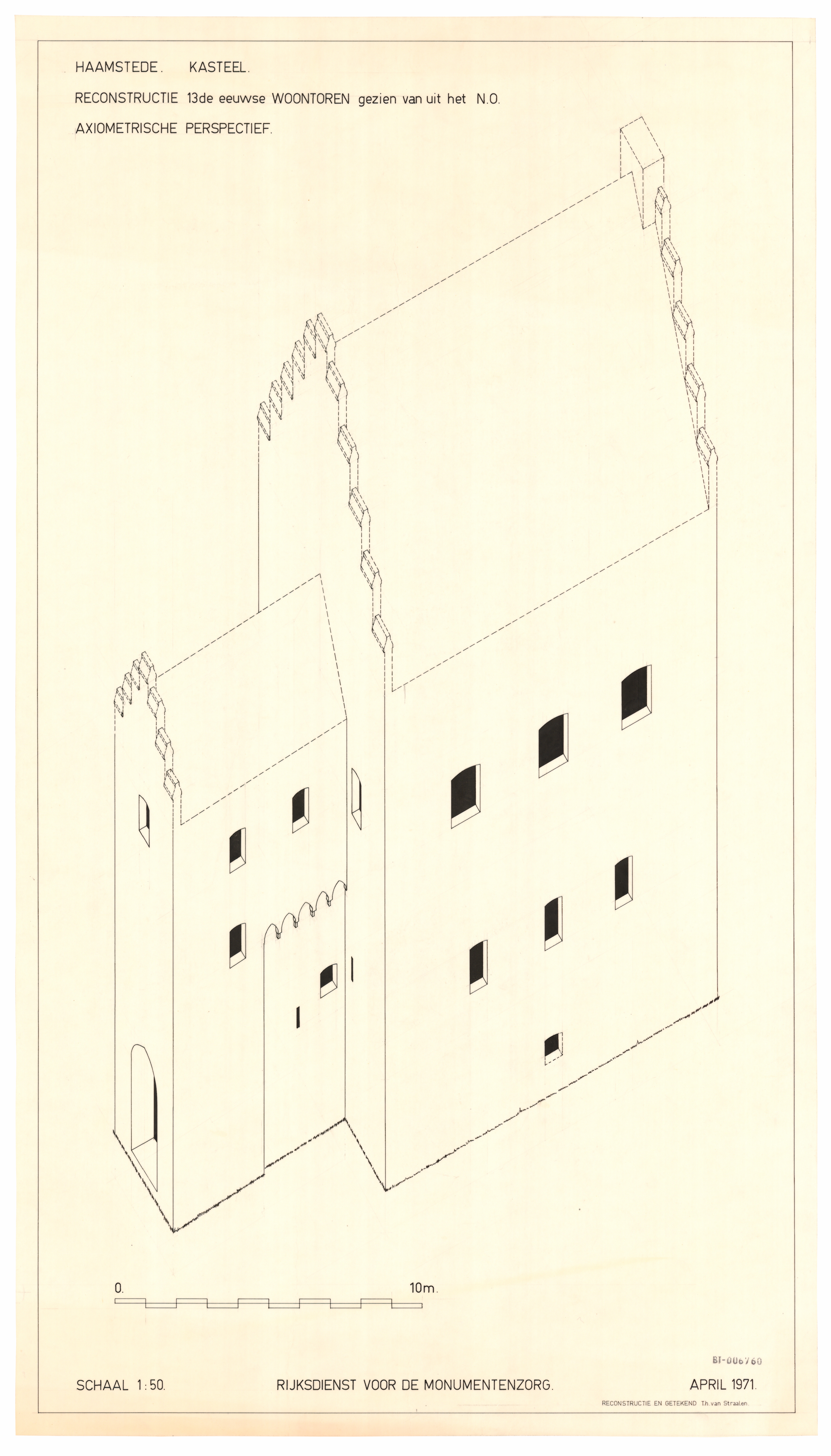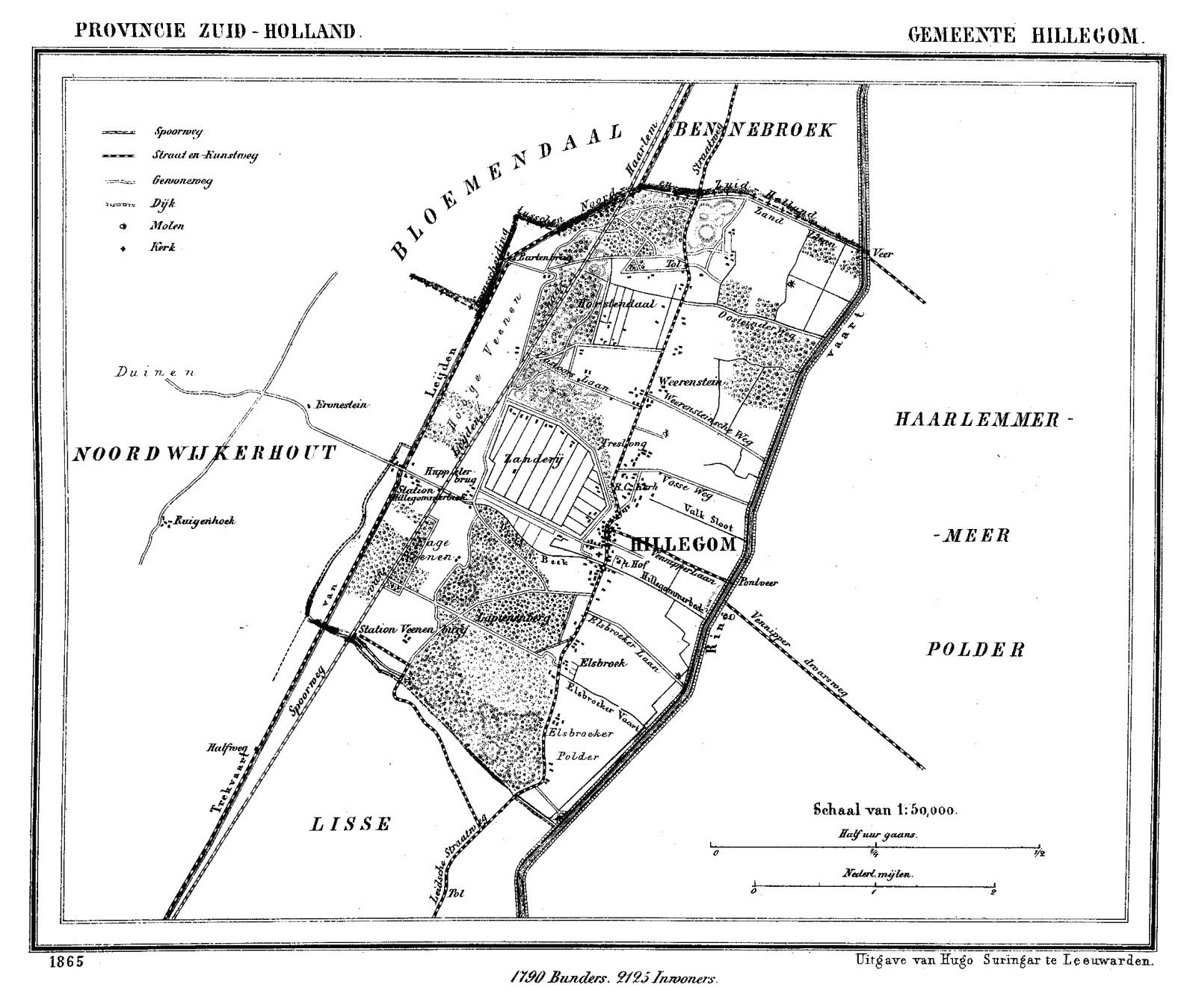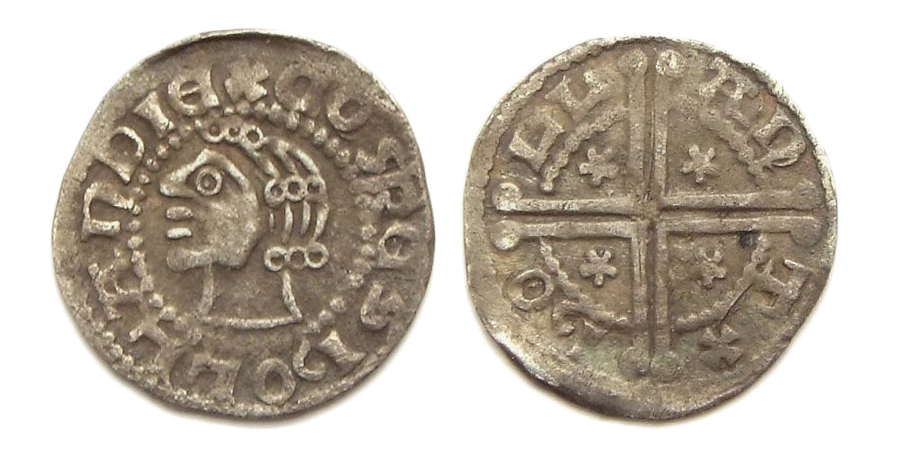|
Witte Van Haemstede
Witte van Haemstede (–1321) was a bastard son of Floris V, Count of Holland, famous for military prowess. Family Witte's half-brother John I, Count of Holland, gave him the property connected to Haamstede Castle, in Zeeland. Battle at the Manpad In 1304 Witte led an army to victory in a battle against the Flemish, who were threatening the city of Haarlem. He is said to have defeated the Flemish near Heemstede with the help of the Haarlemmers at the site of the ''Manpad''. In 1817 Mr. David Jacob van Lennep, who lived in the stately house called Huis te Manpad next to the Manpad, encouraged the Heemstede council to erect a monument. Van Lennep had already composed a romantic song about Witte van Haemstede that was quite popular. The legend says that Witte van Haemstede arrived by ship at Zandvoort and traveled overland to Haarlem over the Manpad, to help the Haarlemmers in their battle against the Flemish who had traveled overland from Hillegom and Lisse Lisse () is a ... [...More Info...] [...Related Items...] OR: [Wikipedia] [Google] [Baidu] |
Floris I Van Haamstede
Floris I van Haamstede ( - Battle of Warns, 1345) was Lord of Haamstede Castle on Schouwen, and of several other areas in County of Zeeland, Zeeland, Netherlands. Family Floris was the son of Witte van Haemstede Lord of Haamstede, and Agnes van der Sluis. He had two younger brothers: Arnoud and Jan. In December 1321 Agnes became the guardian of their children in exchange for paying William_I,_Count_of_Hainaut, Count William III 900 pounds a year. Life Early life In 1325 Floris was mentioned as a squire. In 1326 Count William authorized 'his nephew' Floris van Haamstede to judge a shipping accident. A ship from Renesse had collided with, and sunk, a small ship from Brouwershaven, leading to over 20 deaths. In April 1326 Floris brought somebody to judgement for stealing sheep. In December 1326 Squire Floris van Haamstede was mentioned as a witness about the border between Holland and Brabant near Strijen Castle in Oosterhout. Marriage In about 1320 Floris married Goede ... [...More Info...] [...Related Items...] OR: [Wikipedia] [Google] [Baidu] |
Hillegom
Hillegom () is a town and municipality in the western Netherlands, in the province of South Holland. Hillegom is part of an area called the Duin- en Bollenstreek ("Dune and Bulb Region"). As such, a large portion of the local economy was traditionally geared to the cultivation of bulb flowers. The name Hillegom is derived from the abbey named ''Hijlighem'' (Old Frankish for "Holy Home"). This abbey no longer exists. The current Lord of Hillegom is Jan Six X. History Hillegom was formed on the eastern edge of the coastal dunes where the old Leiden to Haarlem route crossed the ''Hillegommerbeek'' (Hillegom's Creek), not far from the shores of the ''Haarlemmermeer'' (Haarlem's Lake). Places with the suffix "-heim" (or variant spellings) usually developed before the year 1000 and therefore it is assumed that this may apply to Hillegom as well. In 1150 the abbot of Egmond had the rights to naming priests in Hillegom, indicating that a church or chapel existed there. In 1248 the count ... [...More Info...] [...Related Items...] OR: [Wikipedia] [Google] [Baidu] |
People From Schouwen-Duiveland
A person ( : people) is a being that has certain capacities or attributes such as reason, morality, consciousness or self-consciousness, and being a part of a culturally established form of social relations such as kinship, ownership of property, or legal responsibility. The defining features of personhood and, consequently, what makes a person count as a person, differ widely among cultures and contexts. In addition to the question of personhood, of what makes a being count as a person to begin with, there are further questions about personal identity and self: both about what makes any particular person that particular person instead of another, and about what makes a person at one time the same person as they were or will be at another time despite any intervening changes. The plural form "people" is often used to refer to an entire nation or ethnic group (as in "a people"), and this was the original meaning of the word; it subsequently acquired its use as a plural form of per ... [...More Info...] [...Related Items...] OR: [Wikipedia] [Google] [Baidu] |
History Of Haarlem
Haarlem (; predecessor of ''Harlem'' in English) is a city and municipality in the Netherlands. It is the capital of the province of North Holland. Haarlem is situated at the northern edge of the Randstad, one of the most populated metropolitan areas in Europe; it is also part of the Amsterdam metropolitan area, being located about 15 km to the west of the core city of Amsterdam. Haarlem had a population of in . Haarlem was granted city status or '' stadsrechten'' in 1245, although the first city walls were not built until 1270. The modern city encompasses the former municipality of Schoten as well as parts that previously belonged to Bloemendaal and Heemstede. Apart from the city, the municipality of Haarlem also includes the western part of the village of Spaarndam. Newer sections of Spaarndam lie within the neighbouring municipality of Haarlemmermeer. Geography Haarlem is located on the river Spaarne, giving it its nickname 'Spaarnestad' (Spaarne city). It is situated ... [...More Info...] [...Related Items...] OR: [Wikipedia] [Google] [Baidu] |
1321 Deaths
Thirteen or 13 may refer to: * 13 (number), the natural number following 12 and preceding 14 * One of the years 13 BC, AD 13, 1913, 2013 Music * 13AD (band), an Indian classic and hard rock band Albums * 13 (Black Sabbath album), ''13'' (Black Sabbath album), 2013 * 13 (Blur album), ''13'' (Blur album), 1999 * 13 (Borgeous album), ''13'' (Borgeous album), 2016 * 13 (Brian Setzer album), ''13'' (Brian Setzer album), 2006 * 13 (Die Ärzte album), ''13'' (Die Ärzte album), 1998 * 13 (The Doors album), ''13'' (The Doors album), 1970 * 13 (Havoc album), ''13'' (Havoc album), 2013 * 13 (HLAH album), ''13'' (HLAH album), 1993 * 13 (Indochine album), ''13'' (Indochine album), 2017 * 13 (Marta Savić album), ''13'' (Marta Savić album), 2011 * 13 (Norman Westberg album), ''13'' (Norman Westberg album), 2015 * 13 (Ozark Mountain Daredevils album), ''13'' (Ozark Mountain Daredevils album), 1997 * 13 (Six Feet Under album), ''13'' (Six Feet Under album), 2005 * 13 (Suicidal Tendencies albu ... [...More Info...] [...Related Items...] OR: [Wikipedia] [Google] [Baidu] |
1280s Births
1 (one, unit, unity) is a number representing a single or the only entity. 1 is also a numerical digit and represents a single unit of counting or measurement. For example, a line segment of ''unit length'' is a line segment of length 1. In conventions of sign where zero is considered neither positive nor negative, 1 is the first and smallest positive integer. It is also sometimes considered the first of the infinite sequence of natural numbers, followed by 2, although by other definitions 1 is the second natural number, following 0. The fundamental mathematical property of 1 is to be a multiplicative identity, meaning that any number multiplied by 1 equals the same number. Most if not all properties of 1 can be deduced from this. In advanced mathematics, a multiplicative identity is often denoted 1, even if it is not a number. 1 is by convention not considered a prime number; this was not universally accepted until the mid-20th century. Additionally, 1 is the s ... [...More Info...] [...Related Items...] OR: [Wikipedia] [Google] [Baidu] |
De Naald (Heemstede)
De Naald (''the Needle'') is a monument in Heemstede, Netherlands, erected in 1817 by the city council to commemorate two battles on the Manpad road running next to the site. The site is at the corner of the Manpad, and Herenweg, on property belonging to the estate 'Huis te Manpad'. Inscription History De Naald is the name the locals have given the monument. The 'needle' has often been mistaken for the border mark between Heemstede and Bennebroek, but in fact the border is further south. :nl:David Jacob van Lennep (classicus), who lived in the 'Huis te Manpad' behind the monument, was a Dutch poet and professor of classical languages in Amsterdam. His son, Jacob van Lennep, who was 15 at the time of the monument's placement, later wrote a song commemorating 'Witte van Haemstede', one of the heroes mentioned on the monument. Later historians have questioned whether these events did in fact take place, and also whether the location is correct. [...More Info...] [...Related Items...] OR: [Wikipedia] [Google] [Baidu] |
Lisse
Lisse () is a town and municipality in the province of South Holland in the Western Netherlands. The municipality, which lies within the Duin- en Bollenstreek, covers an area of of which is water. Its population was in . Located within the municipal boundary is also the community De Engel. History Early history The history of Lisse is closely related and similar to the neighboring towns of Hillegom and Sassenheim. Based on a document from 1198 which makes official mention of the town's name, Lisse celebrated its 800-year anniversary in 1998, although there is an indication that there was already a settlement there in the 10th century. In the Middle Ages, Lisse was a small settlement; there were only 50 houses in 1500. Because of prolonged warfare (particularly the wars of Charles the Bold and the Eighty Years' War), poverty was prevalent. Its population lived from agriculture, animal husbandry and peat harvesting. Recent history In the 17th and 18th centuries, Lisse was, lik ... [...More Info...] [...Related Items...] OR: [Wikipedia] [Google] [Baidu] |
Zandvoort
Zandvoort () is a municipality in the province of North Holland, Netherlands. It is one of the major beach resorts of the Netherlands; it has a long sandy beach. It is bordered by coastal dunes of Zuid-Kennemerland National Park and the Amsterdam water supply dunes. It hosts the country's most prominent motor racing circuit, Circuit Zandvoort. The municipality of extends to take in Bentveld; it had a population of 16,954 in 2017. A nudist bathing section of the beach begins about 2 km to the south, with six eateries, which extends kilometers further. History Zandvoort is known to exist in 1100, called ''Sandevoerde'' (a combination of "sand" and "''voorde''", meaning ford; compare English '' Sandford''). Until 1722 the area was under the control of the Lords of Brederode. The village was dependent on fishing for many centuries until the 19th century when it started to transform itself into a seaside resort, following the pattern set by similar towns in the United Kingd ... [...More Info...] [...Related Items...] OR: [Wikipedia] [Google] [Baidu] |
Floris V, Count Of Holland
Floris V (24 June 1254 – 27 June 1296) reigned as Count of Holland and Zeeland from 1256 until 1296. His life was documented in detail in the Rijmkroniek by Melis Stoke, his chronicler. He is credited with a mostly peaceful reign, modernizing administration, policies beneficial to trade, generally acting in the interests of his peasants at the expense of nobility, and reclaiming land from the sea. His dramatic murder, engineered by King Edward I of England and Guy, Count of Flanders, made him a hero in Holland. Early life Floris was the son of Count William II (1227–1256) and Elisabeth of Brunswick-Lüneburg.M. A. Pollock, Scotland, ''England and France After the Loss of Normandy, 1204-1296'', (The Boydell Press, 2015), xv. His father was slain in 1256 by Frisians when Floris was just two years old. Custody over Floris fell first to his uncle (Floris de Voogd from 1256 to 1258), then to his aunt ( Adelaide of Holland from 1258 to 1263). The fight over custody of Hol ... [...More Info...] [...Related Items...] OR: [Wikipedia] [Google] [Baidu] |
Huis Te Manpad
The Huis te Manpad is an historical villa and former summer home of Jacob van Lennep in Heemstede, the Netherlands; bordered by the Leidsevaart canal, the Manpadslaan, and the Herenweg. It neighbors the estate of Hartekamp, famed for the gardens described by Carl Linnaeus. Both estates still have trees and other flora dating from that period. The Haarlem archives have material about the estate dating back to 1558. The current main building dates from 1630. It was restored in 1720 when the gardens received an overhaul (the same ''Arcadia'' gardening period in the Haarlem area that drew Linnaeus to Hartekamp). In 1767 the villa came into the possession of the Van Lennep family, who owned it up to 1953. In 1945 it was again restored by Monumentenzorg. Thanks to the loving care of the Van Lennep's, the gardens were almost intact in the form they had been in Linnaeus's day, and it is currently being restored. The most recent private owner, Jan Visser, gave it to the ''Stichting Huis ... [...More Info...] [...Related Items...] OR: [Wikipedia] [Google] [Baidu] |
Heemstede
Heemstede () is a town and a municipality in the Netherlands, in the province of North Holland. It is the fourth richest municipality of the Netherlands. History Heemstede formed around the Castle ''Heemstede'' that was built overlooking the Spaarne River around 1286. Before 1296, Floris V, Count of Holland, granted Heemstede as a fiefdom to Reinier of Holy. During the 14th century, a village formed near the castle, which was destroyed and rebuilt several times in this period. A resident of this castle was Adriaan Pauw, who bought it in 1620. In 1653, Bennebroek split off from Heemstede, becoming a separate fiefdom. Growth was slow, and in 1787 Heemstede counted 196 families. Even at that early date Heemstede had already gained the reputation it has today, of being primarily a "bedroom community" for the cities of Haarlem and Amsterdam. Wealthy city families left the cities in the summer, escaping "canal fever" which caused illness from the putrid canals. As a result, many e ... [...More Info...] [...Related Items...] OR: [Wikipedia] [Google] [Baidu] |



_1938.jpg)





